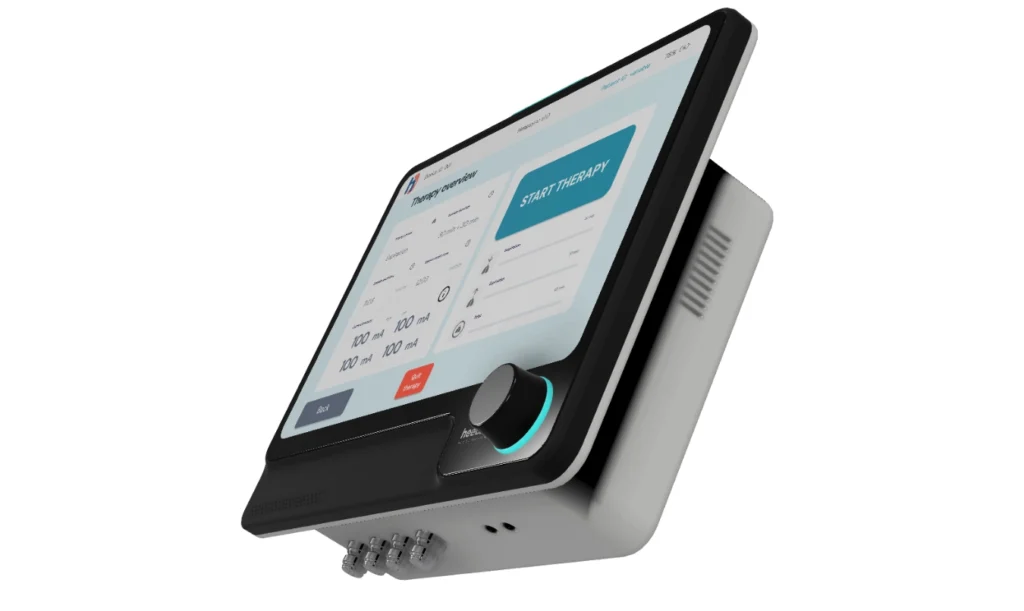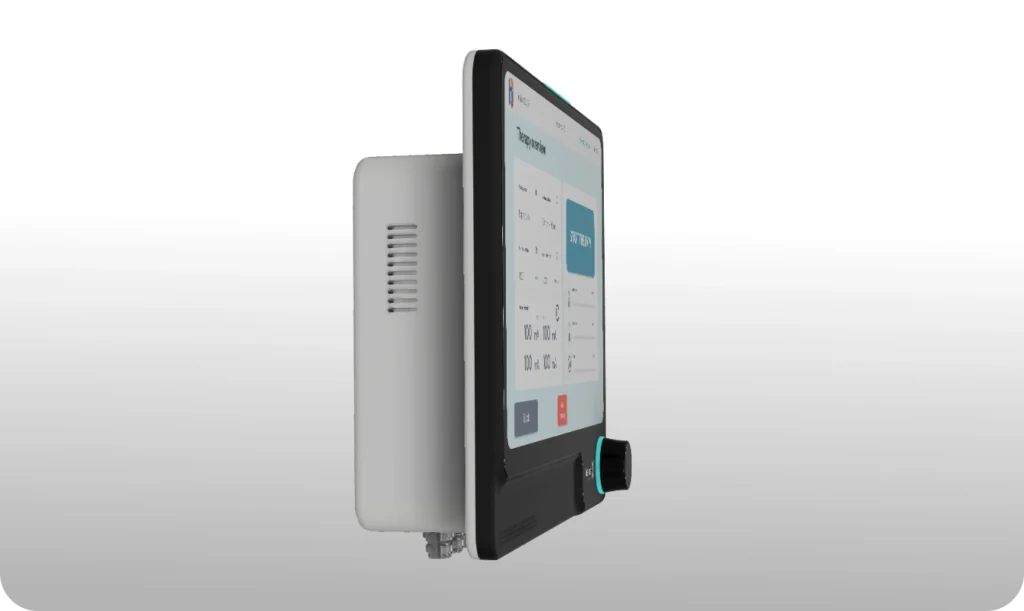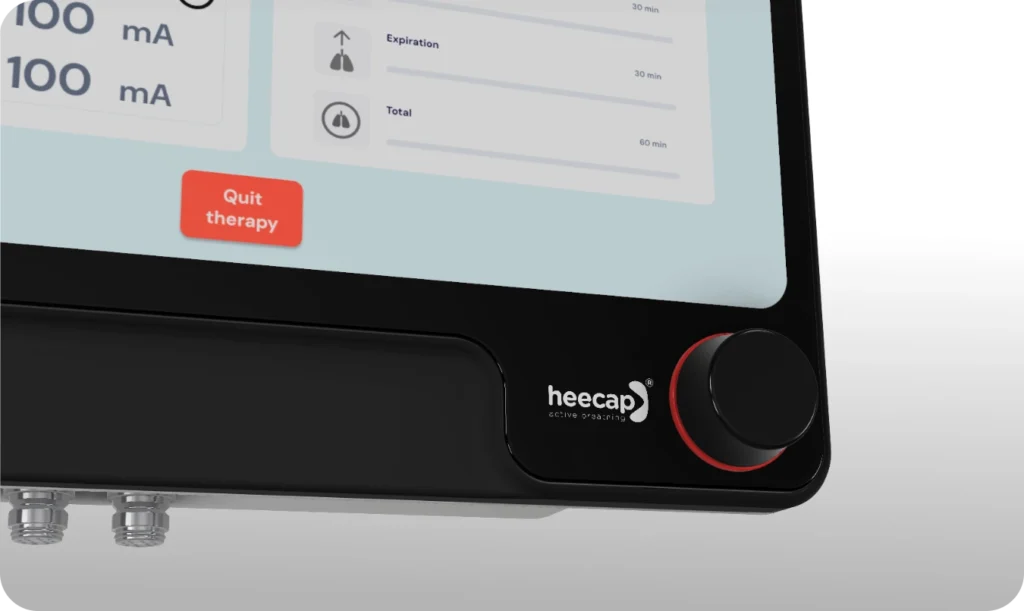Respiratory electrostimulator

In Context
Mechanical ventilation is a life-saving technique that assists or replaces the function of breathing. However, more than 50% of patients on mechanical ventilation experience muscle atrophy in crucial respiratory muscles such as the diaphragm, intercostals, and abdominals due to lack of use. This atrophy contributes to breathing difficulties for patients, leading to extended stays in Intensive Care Units and complicating their recovery.
Heecap applies Transcutaneous Electrostimulation of Respiratory Muscles (TERM) in synchronisation with patients’ breathing, during both inspiration and expiration. Electrostimulation of the inspiratory and expiratory muscles has been shown to improve respiratory muscle strength.
Heecap prevents and treats respiratory muscle atrophy, allowing patients to have a much more successful process of disconnection from mechanical ventilation, reducing their stay in the intensive care unit, and improving their quality of life.
The Challenge
Heecap has selected Perdigó to develop their medical device from concept to market.
Perdigó's Approach
Perdigó offers an integrated development programme, including:
- Requirements Specification
- Industrial Design
- Human Factors & Usability Engineering
- Custom Electronics, including a voltage-controlled current source
- Embedded Software, compliant with SiMD regulations
- Graphical User Interface (GUI) Design
- Design for Manufacturing (DfM)
- Device Verification & Validation
- Technical & Regulatory Documentation
- Prototypes for pivotal Clinical Trials




Delivered Value
Heecap and Perdigó have jointly unveiled the first prototype of the advanced electrostimulation device at Mobile World Congress Barcelona 2025, after only 6 months of development.